As more homesteads begin to explore raising meat animals, hair sheep breeds are becoming increasingly popular. Hair breeds have a lot of beneficial qualities that make them the perfect animal for small farms in addition to larger, commercial-scale operations.
If youre in the market for a hair sheep, here are some of the 13 hair sheep breeds you should know about.
What is a Hair Sheep Breed?
In the past, almost all sheep were hair sheep instead of wool sheep. The wool sheep that we are familiar with today were created out of centuries of breeding for improved wool production.
Only about ten percent of modern sheep breeds are hair sheep and most of these are found in tropical areas. Nevertheless, since the breeds are so adaptable, they can thrive in cold climates, too, as they grow thicker undercoats when they move further north.
Hair sheep have coats with few woolly fibers or fibers that are shed annually. While all sheep technically have both wool and hair fibers, hair sheep breeds have higher proportions of the latter. You are more likely to find a hair sheep breed living in a warmer climate than in a cold one.
Benefits of Raising Hair Sheep
There are some really good reasons to raise hair sheep. Not only do they lack wool, meaning you wont have to shear them quite as often, but they also are more resistant to parasites and disease. They are also prolific breeders.
If youre reading sheep for meat, those three characteristics make them highly desirable. The wool is merely a byproduct in a meat sheep, and youll only have to shear them occasionally (if ever) if you choose a meat breed.
However, you can sell the fiber from a hair sheep in most cases, too. You wont fetch prices quite like you will with regular wool, but youll also have less maintenance. If you choose not to shear, hair sheep will just shed their hair when the weather warms in order to keep cool.
Hair sheep also tend to be more diversified when it comes to their palates. They will eat just about anything since they were adapted from hardy ancestors, they can eat just about any type of vegetation.
This includes vegetation that other species including other breeds of sheep would normally turn their noses up at. As a result, hair sheep tend to fatten up more quickly than sheep of other breeds.
And when it comes to disease resistance, you really cant beat the quality of a hair sheep. Unlike other species, hair sheep are resistant to most of the parasites shed by cattle.
You can, therefore, graze sheep and cattle together without relying on worming medications thereby maximizing the use of your pasture.
Hair sheep also have excellent reproductive rates. They are more likely to drop twins, and often can even birth triplets and quadruplets. They lamb easily on pasture and lambs gain weight quickly, allowing them to head to the market more quickly.
The Top 13 Hair Sheep Breeds You Should Know About
With sheep meat sales on the rise in North America, its essential that you familiarize yourself with the best hair sheep breeds.
Theres a huge market demand for high-quality lamb in particular, and even if you dont plan on selling any of the meat you raise, there are so many good reasons to consider raising one of these top breeds.
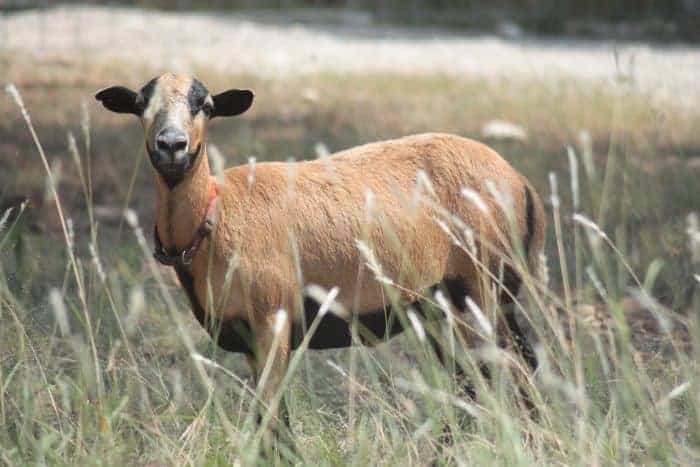
Barbados Blackbelly
Barbados Blackbelly sheep are some of the most common hair breeds. There is some controversy over where these sheep originated some people argue that they are from Barbados, as the name implies, while others believe they are native to Africa.
No matter what you choose to believe, the sheep arrived in the United States in the early 1900s. They are best suited for warm climates but are known for their ability to regularly produce twins and reach excellent carcass weights.
This sheep is absolutely stunning to look at. It is naturally polled, which can eliminate some potential safety problems on your farm. The Barbados Blackbelly is also widely available, with rams usually growing to about 150 lbs.

American Blackbelly
The American Blackbelly is closely related to the Barbados Blackbelly as you can likely infer from the name. A cross between Barbados Blackbelly and Rambouillet and Mouflon sheep, this horned breed is easy to confuse with the Barbados Blackbelly. American Blackbelly rams generally have large, curved horns, though.
In addition, American Blackbelly rams tend to be a bit smaller it is rare for them to grow larger than 140 lbs. They are resistant to parasites and the resulting meat is delicious.
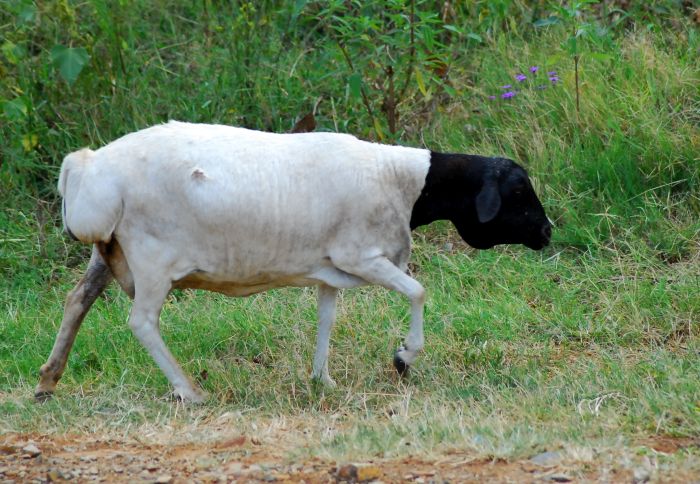
Blackhead Persian
Blackhead Persians are native to Somalia and the Caribbean. These sheep have black heads and white bodies, with short, compact bodies and legs and a fat rump.
They arent the best at lambing compared to other hair breeds, but still, hold their own when it comes to the quality of their fiber and meat.
California Red
A combination of Barbados Blackbelly and Tunis sheep breeds, the California Red produces wool in addition to lovely red hair.
It is docile and easy to manage, one of the best hair sheep breeds to consider if you have small children. It is also prized for its ability to produce milk. Rams can grow to well over 220 lbs.
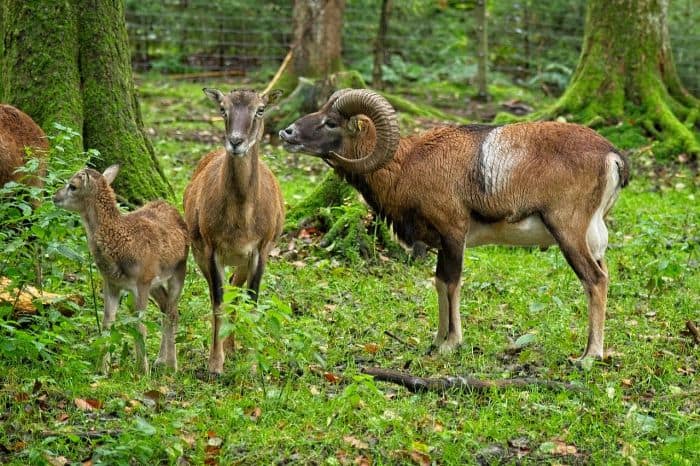
Mouflon
The Mouflon sheep is considered one of the oldest sheep breeds around. In fact, it is believed to be one of the two sheep breeds that are the ancestors for all other domestic sheep breeds. This sheep has a dramatic appearance that is wild and often compared to wild bighorn sheep.
With red-brown hair and dark brown stripes, these sheep are best known for their horns. Rams have balanced, curled horns that measure up to 33 inches when fully developed!
Mouflon sheep are native to the mountain ranges of the Caucasus and the Balkans and were first introduced to continental Europe and later North America. For the most part, they are raised on North American game ranches, where rams can reach up to 120 lbs.

West African Dwarf
Native to the tropical forests of central Africa, this sheep breed is often confused for a mountain goat. It has curved horns and a scurfy mane. This sheep is still raised in Africa, and while the breed grows quite slowly, it is adaptable and hardy to most climates.
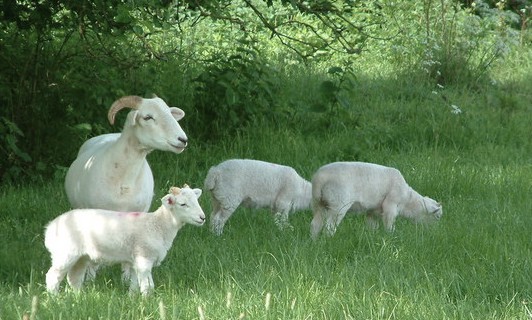
Wiltshire Horn
The Wiltshire Horn is an old breed of hair sheep that is native to England. As the name implies, both genders carry horns. This sheep is considered a hair sheep because it grows a very short fleece that it sheds annually. They are commonly crossed with Katahdins to improve size and carcass quality.
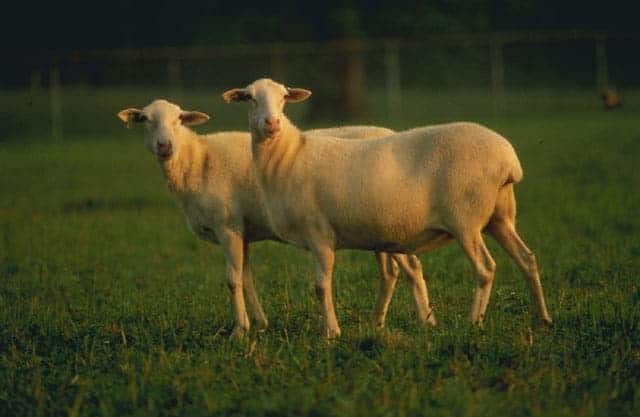
St. Croix
St. Croix are descendants from West African hair sheep, although there are some folks out there who believe that these sheep are actually cross breeds of Wiltshires and Criollo sheep.
They are known for their ability to birth multiple lambs and they also have exceptionally gentle temperaments. Theyre great for newcomers to the hair sheep business and do well in warm climates.
That being said, St. Croix sheep can thrive in colder climates, too, as long as they have shelter. They are hardy and resilient because they are crossed so often. St. Croix sheep are also known for their resistance to parasites. A large sheep breed, rams often reach more than 190 lbs.
St. Augustine
St. Augustine sheep are crosses between Dorpers and St. Croix sheep. They were developed specifically for the hot and humid conditions of Florida in 1991. A relatively new breed, its not yet clear how well this breed performs in terms of meat, milk, and reproduction.
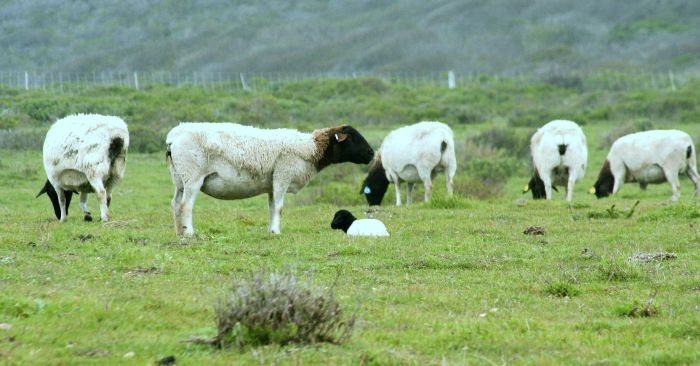
Dorper
The Dorper sheep is often raised for mutton, but its a popular hair breed, too. Developed in the 1930s, this sheep was originally created as a cross between the Blackheaded Persian and the Dorset. It has an excellent rate of lambing and can tolerate hot, dry conditions its native to South Africa.
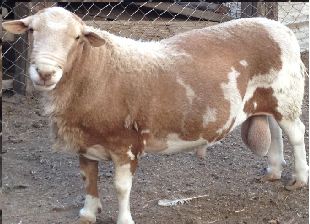
Katahdin
Katahdins were first bred in the United States in the mid-1950s. Michael Piel created these sheep after importing three St. Croix sheep (referred to as African sheep at the time). Piel experimented with the breed, playing around with different combinations until the breed was officially named in the 1970s.
With a moniker that pays homage to Piels favorite mountain in Maine, the Katahdin eventually reached breed standards and was registered. This breed is medium-sized and is hardy with a high-quality carcass. It is also exceptionally low-maintenance.
As a result, the Katahdin is the most common hair sheep in America. One of the first breeds to be recognized for its commercial production, the rams can reach more than 250 lbs. Nevertheless, they are known for being docile and easy to handle.
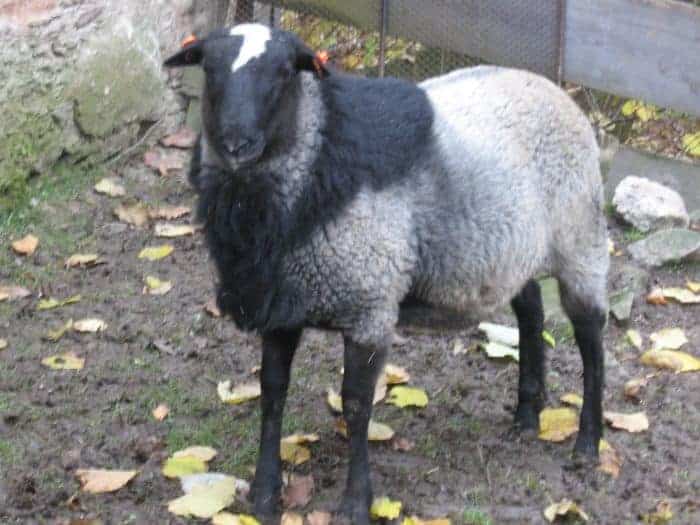
Romanov
Romanov sheep dont technically fall into the hair sheep category although they produce coats of wool, they shed them in the summer.
Romanovs are prolific breeders that are known for their ability to start mating very young. Quadruplets are common in fact, the world record litter size for sheep is held by a Romanov ewe. She bore nine lambs!
Royal White
Royal White sheep arent true hair breeds necessarily because they are actually the result of a cross between two existing hair breeds Dorpers and St. Croix. These sheep are large, combining the best of both breeds in one sheep.
Is a Hair Sheep Breed Right For Me?
Before you decide whether a hair sheep breed is right for you, consider the following.
First, what interests you about the breeds? If youre looking to make your money with wool, steer clear. But do keep in mind that although wool can bring in some money, it can have a high cost of production it costs a lot to shear it and bring it to market, often more than what it costs to produce in the first place.
While shedding of the coat varies from year to year with hair breeds, you usually are not going to need to shear at all. Most sheep will shed their coats by the hottest days of midsummer.
Shedding isnt pretty and its not for the faint of heart. Resist the urge to pick up the shedded fleece, as it usually wont perform well when sold.
Otherwise, there are few considerations you will need to make when deciding whether hair sheep breeds are right for you. They require minimal maintenance and lambs are usually quite active and vigorous.
They are easy to fatten on pasture instead of in feedlots, and the flavor of the meat is superb.
How to Find Local Hair Sheep
It can admittedly be a bit tough to find hair sheep for purchase in your area. With any livestock, however, its important that you find reputable breeding stock to avoid introducing unhealthy animals (or communicable diseases) to your farm.
You can always check with Craigslist and other classifieds but do your research. Check the breed organizations website to find a local breeder, and try to avoid livestock auctions.
Livestock auctions generally sell diseased or poorly behaving animals, which is not a good place to start if you are new to raising hair sheep.
Ask around any times, you will be able to find the breed you are looking for by putting up ads or getting in contact with sheep breeders (even of other breeds) to see if they are aware of any sales in your area.
Consider Raising a Hair Sheep Breed
In addition to all the benefits listed above, it should be noted that hair sheep breeds are prized for their versatility and multifunctionality. Not only can most hair breeds be raised for meat as well as for their fiber, but they can often be raised as dairy animals, too.
Plus, another excellent product that can be derived from hair sheep is the leather. Leather from hair sheep is finer and of a higher monetary value than the leather from wool breeds.
With all of these reasons to raise hair sheep, theres no reason not to put them at the top of your list of breeds to consider. As hair sheep breeds have become more popular, you will likely be able to find top breeders for sale in your area, too.
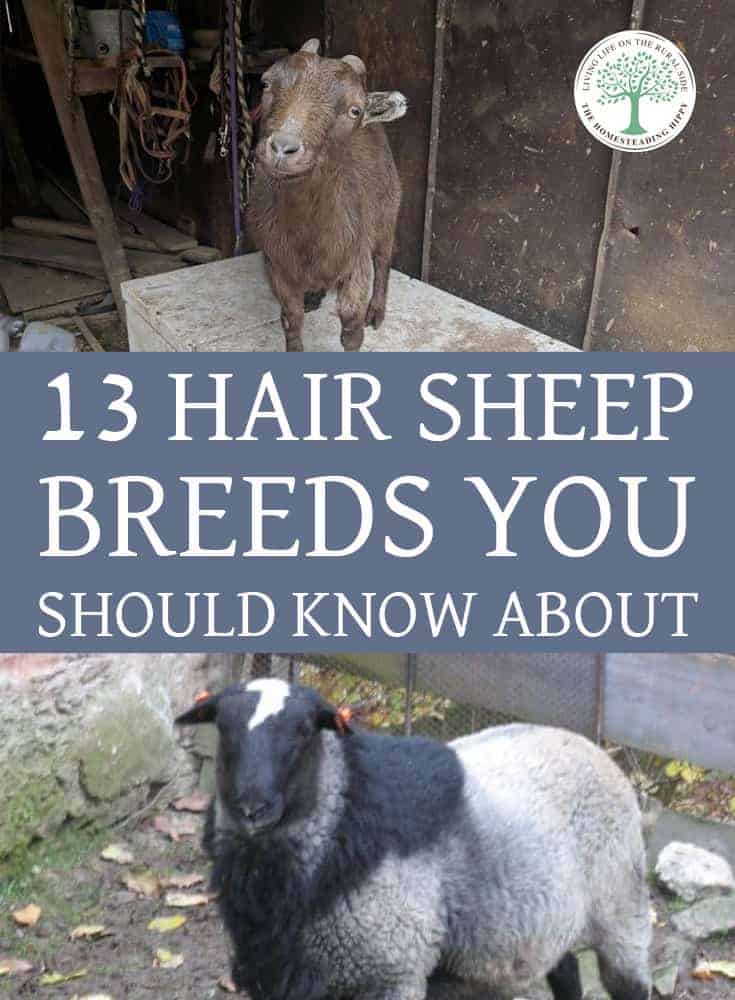
The post 13 Hair Sheep Breeds You Should Know About appeared first on The Homesteading Hippy.
